Teething is so hard on your puppy.
If your puppy has suddenly started to chew on everything in your home, or your new furry friend is sinking their teeth into your furniture or your fingers more than they were last week? They’ve likely entered the teething phase of their development – which can be very confusing for a new puppy parent (if you need help de-confusing the process? Pupdates are fantastic!)
Just like human babies, puppies start out with baby teeth. Though, puppies have 28 baby teeth, whilst human babies have 20. These small, needle-sharp teeth are the bane of most puppy parent’s lives when puppy comes home (because puppy doesn’t understand that biting humans isn’t appropriate).
What’s important to know begin to fall out during the teething process to make room for their permanent, stronger teeth.
This process, while a natural, healthy part of your puppy’s development, can also be painful for your pup.
What Is Teething In Puppies?
So, you probably know that human babies teeth, well, this actually one of the things that’s normal amongst mammals.
Puppies are born with an incredibly sharp set of teeth. This allows them to get a response from things from a young age and determine if the thing is alive (by triggering it’s pain response from needle sharp teeth biting down), or dead (by no response). So your puppy’s teeth being insanely sharp? Is actually a biological feature of a puppy that allows them to explore the world.
This first set of teeth (also called deciduous teeth), yield to adult or “deciduous” teeth.
These more permanent teeth don’t need to be sharp, as sharp isn’t something that your puppy needs forever, and so, as their jaw strength grows, these sharp teeth just arent needed, so, they get dropped, and replaced with larger, stronger adult teeth – all 42 of them (adult humans only have 32 by the way!)
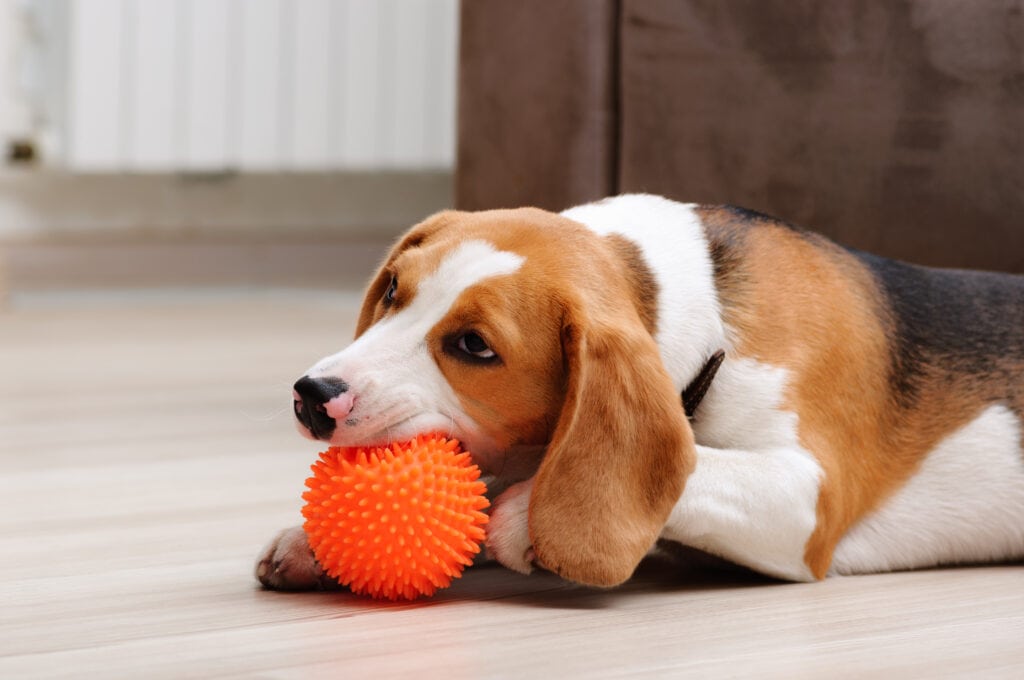
When Do Puppies Start Teething?
Your puppy’s baby teeth, also known as “milk teeth” or “needle teeth,” first appear from 5-8 weeks old, while your puppy is still nursing, and it’s often coupled with weaning, and the start of the ‘early socialisation‘ phase of development (which happens typically about 5 – 6 weeks of age).
Once your puppy is old enough to go home with you, the teething stage isn’t far beyond. Puppy teething typically starts from 12-20 weeks old (most commonly around 16 weeks or 4 months of age), and in some more unusual cases, it can last until your pup is 24-32 weeks old (6-8 months).
Most dogs will have developed all 42 of their adult teeth by 8 months. While most puppy teeth will fall out on their own, some dogs, especially smaller or brachycephalic breeds, may need to seek vet attention to remove some.
How Do You Know If Your Puppy is Teething?
One of the biggest signs that your puppy is teething is their desire to chew on anything and everything around your home.
Your puppy uses their mouth to explore and learn about the world around them, and chewing is a natural behavior for dogs. During teething, this natural desire to chew is even stronger because it also helps soothe your puppy’s aching gums.
You may also find small, rice-sized puppy teeth around your home as their teeth begin to fall out, but most puppies will swallow the baby teeth.
Other symptoms of teething in puppies include:
- Drooling
- Blood spots on your dog’s toys
- Red or swollen gums
- Crying or whining particularly when chewing
- A low-grade fever
- Tarry poops
- Eating slower than usual
- Going off their food entirely.
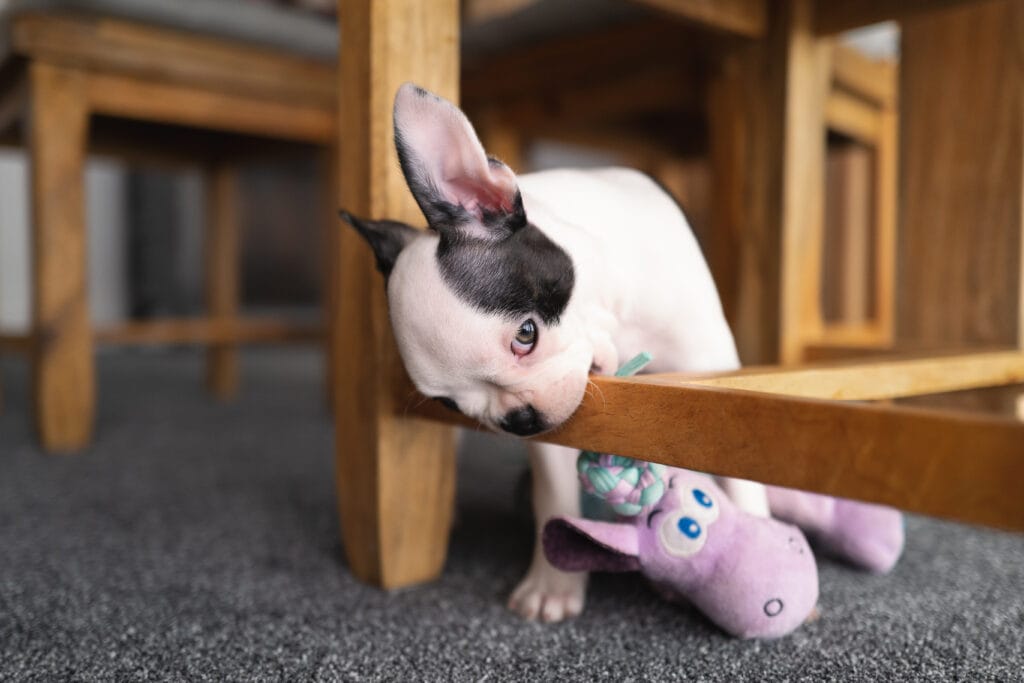
What Can Help My Teething Puppy?
Ironically, the most satisfying thing that your puppy can do to aleviate this pain? is to chew. This is an entirely natural instinct that your puppy has to give relief for teething pain. This, sometimes, can be demonstrated on furniture legs, or on something else that your puppy finds satisfying – and that might be anything. For example, for Indie? He enjoyed softer toys, which frustrated me (because he chewed and left blood as he dropped those sharp puppy teeth)
My puppy yelped, is that ok?
Yes, sadly with sore gums, and a lot of pain, our little friend may give the yelp of a hurt puppy, or even whimper as they chew, which may seem really strange! But it is normal. Yet, if you are truly worried? Seek medical advice to get an accurate diagnosis of your pet.
What’s the best way to stop my puppy chewing on me?
Well, you’re going to redirect to a toy, ensure that puppy is properly slept and be patient- that’s pretty much it.

6 Tips to Survive the Teething Stage with Your Puppy
Once your puppy starts teething, it can seem like a never-ending battle to keep your valuables out of their small mouths, or manage the pain that your teething puppy is experiencing. So, here are a few tips to help you survive the teething stage!
1 – Match the Textures Your Puppy Craves
Chewing is a natural behavior for your puppy, especially during teething when they’re trying to self-soothe, so one of the best ways you can help your puppy is by providing appropriate chew toys.
Pay attention to the types of objects that your puppy is reaching for when they chew and try to match those textures in the teething toys that you buy. This will give them the same satisfaction they were getting, but in a safe, supervised way.
For example;
- Puppy chewing on the remote? Try a tougher Nylabone or other rubber bones – or perhaps a kong?
- Going for your favorite pair of shoes? Try a leather-ball or bully sticks
- Wooden furniture legs or skirting boards? Try a chew root.
- Cold can also be good to soothe sore gums, ice cubes, or a frozen wash cloth.
- Cushions or soft furnishings? Go for a soft toy (dog-specific soft toys!)
Not all toys make great teething toys, however, so pay close attention to the packaging. Because your puppy is still teething and doesn’t have their full adult teeth, look for chew toys that aren’t too hard. Your puppy’s chew toys should be able to bend.
The toys should still be tough enough to withstand chewing, though. Stuffed animals and other plush toys, for example, would not make great teething toys. Look for soft, rubber dental rings, soft plastic chews, or teething sticks – most of which is available either on Amazon, or at your local pet store – there’s likely even a range of teething-specific toys! (or check out Best Puppy Toys)
Tip: Ensure that you pick the right size toys for your puppy’s mouth – safe chew toys should be dependant on your young pup’s size, large breeds will require larger toys, and smaller breeds will want lighter toys, this way you’re finding something that will not get stuck in your dog’s mouth will be the best way to ensure safety.
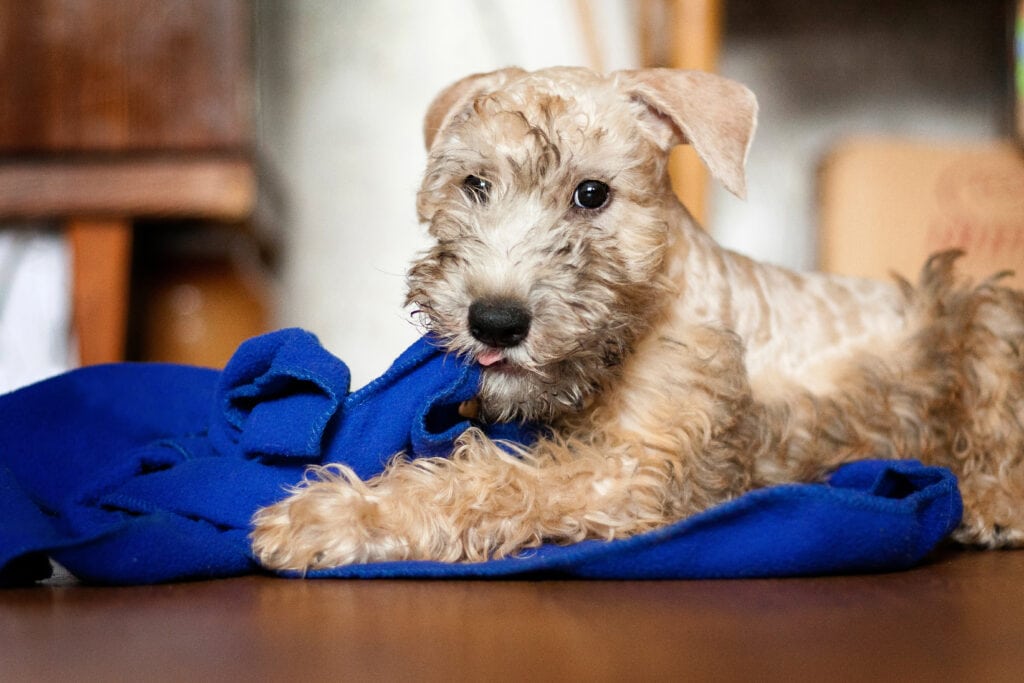
2 – Be Patient
Patience is a must right now, your puppy might be extra annoying but that’s really understandable when you remember that this is likely the most pain your puppy has ever been in. Consequently when they’re showing their pain? Give them comfort and understanding.
3 – Freeze Your Puppy’s Toys
One of the main reasons that your puppy is chewing on your furniture is to help soothe their painful gums. You can help soothe their aching gums even more by putting their toys in the freezer. The cold can help ease the pain and reduce swelling in their gums.
In addition to your puppy’s toys, you can also try cutting a carrot into small, easily chewable chunks and freezing those for your puppy to chew on. You can also add them to a small, puppy Kong filled with other soft, tasty treats and freeze that for a fun enrichment activity.

4 – Work on Mouthing & Biting ASAP
While chewing is a normal, healthy behavior for your puppy to have during teething, puppy biting can be a problem that stretches out into adulthood if you don’t start training right away.
If your puppy reaches for your fingers or your ankles as a chew toy while they’re teething, then find a toy instead. Give them a reason to want to bite it, make it fun! Make it exciting, and make sure all of puppy’s grabs for you, land on the toy, and give plenty of praise whilst puppy gets the toy.
Use this method in conjunction with other obedience training like learning how to sit and stay to communicate with your pup what the boundaries are in your home. The sooner you establish these boundaries, the better your puppy will learn and the more well-behaved they will be as they grow.
Question: Should I correct them and say “Ow”? Or maybe yelp?
This was once the practice, but so was caning in schools — we don’t really use this method any more, because what does Ow mean? If you’re not a human, ow may mean “pass me the salt”… Ow is meaningless and its a concept made for us humans. Which means it’ doesn’t really work, or, if it does, you’re likely telling it, which is conditioning “Bite human = scary things happen”.
Whilst the latter may work it’s also creating human = scary association which is something you really want to avoid.
Then yelping. What about that? Isn’t that communicating with your dog in dog, effectively? Well, you might thing so. But… the flip side is can you guarantee you’re yelping, and not sounding like a squeaky toy? If you sound like a squeaky toy, which squeaks to entice your dog or puppy to play (by satisfying some of the predatory motor pattern), then why would your dog stop chomping on you?
Mmm! Good fun, huh? Dog logic is really interesting.
5 – Puppy-Proof Your Home
While you should always supervise your puppy and correct their behavior when they chew on something they shouldn’t be, sometimes puppies are sneaky. To keep your pup safe, it’s best to puppy-proof your home.
Hide any wires or cords that are visible, and move any toxic food, cleaning products, or plants, up high where your puppy can’t reach. You should also move all medications to a medicine cabinet.
Putting up a baby gate or an enclosed exercise pen to contain your puppy in one safe space of the house is also a good idea. This way you can keep a close eye on them and keep them out of reach of anything they shouldn’t chew on.
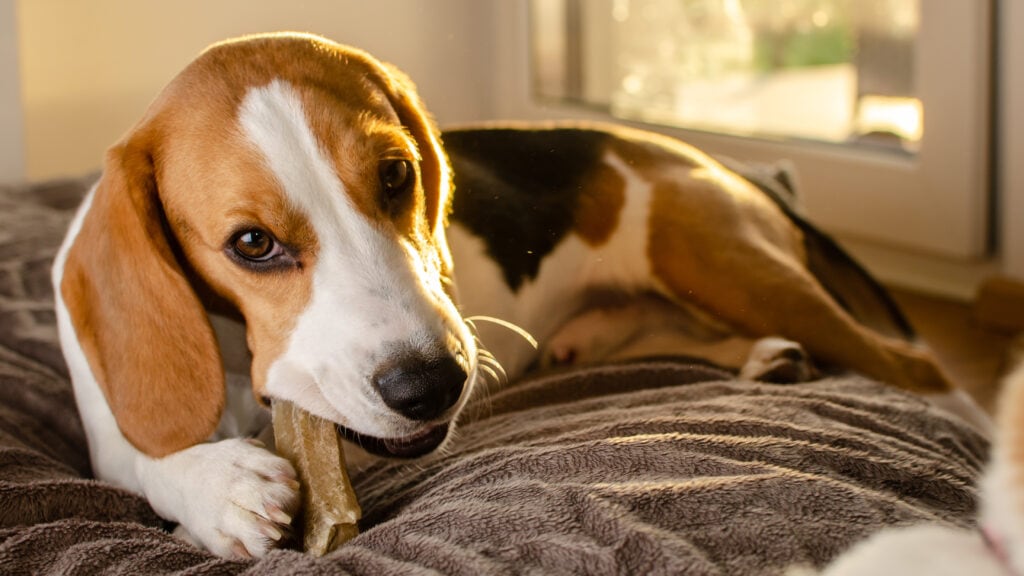
6 – Soften their food
If you feed kibble (Ideally from reputable dog food brands), then you may experience that your dog may seem to go off their food. This is a false conclusion most of the time. This is a super easy conclusion to come to, and something too many pet parents do, but it’s just a case that your puppy is hurting and the pain is outweighing the desire to eat. However, adding a little water (or bone broth) to dry food will soften the kibble to allow it to not hurt your puppy as they chew.
This will just make sure that your puppy is still eating.

Extra Tip: This is a great time to start a Healthy Dental Care Routine!
As your puppy’s adult teeth come in, this is a great time to build a healthy habit of keeping your puppy’s teeth clean. While your puppy’s teeth are too sensitive at first for you to scrub them, this is the perfect time to get your puppy used to what tooth brushing will look and feel like.
Introduce them to a toothbrush by lightly touching your puppy’s teeth with it, and then rewarding them for good behavior. You can also rub puppy-specific toothpaste onto your dog’s teeth to keep them clean.
By introducing your puppy to all the components of teeth brushing now, they’re more likely to be comfortable with the process as they age.
Is Your Puppy’s Teething Normal?
Teething is an important part of your puppy’s development, but the process doesn’t always go perfectly. Try to remember to keep patient.
If your puppy ever has trouble eating, shows reluctance to eat, or has any odor coming from their mouth, it’s best to check with your vet to make sure your puppy’s adult teeth come in healthy and strong.
Or, maybe you’re concerned about aggression? You can absolutely get in touch, and let’s see if I can help!

Author, Ali Smith
Ali Smith is a professional, qualified, and multi-award winning trainer is the founder of rebarkable. She has always believed animals deserve kindness and champions force free methods. Believing that dog guardians will all choose the kindest options if proper information is provided, she aims to help all dog guardians who need it and make dog training as accessible as possible
Ali lives win Maryland, US with her husband and her three dogs.

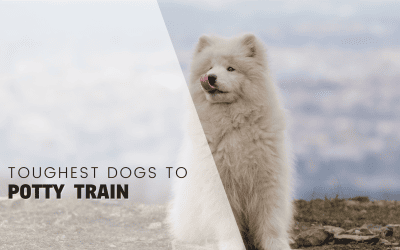

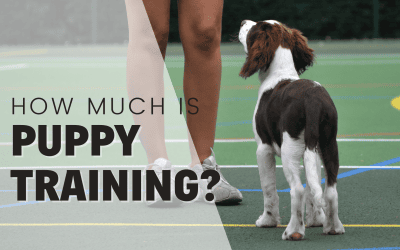

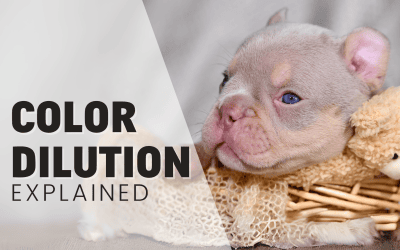
0 Comments